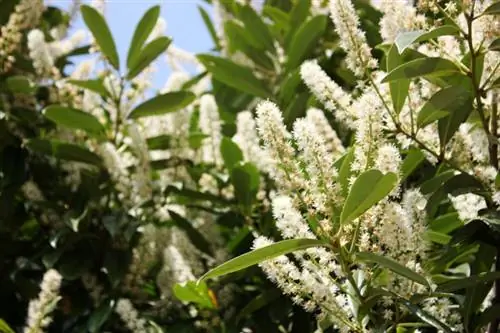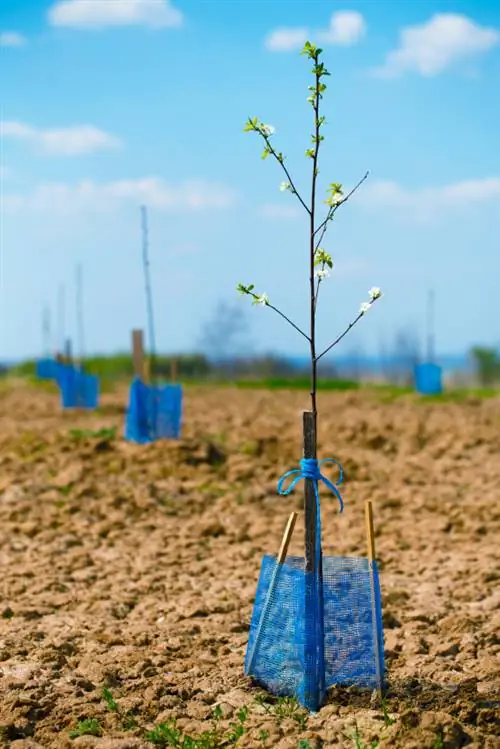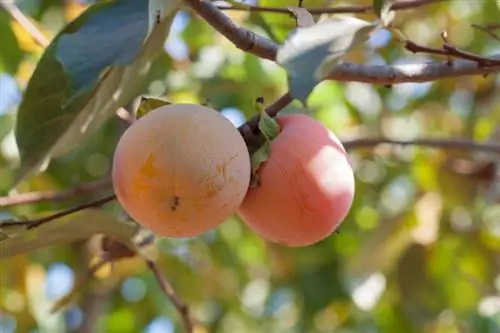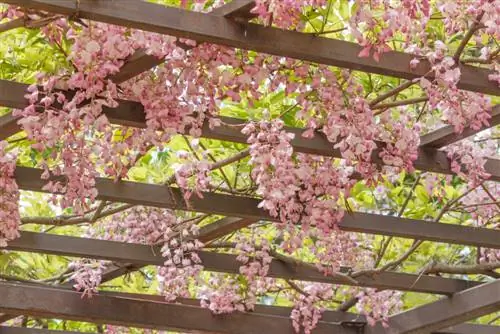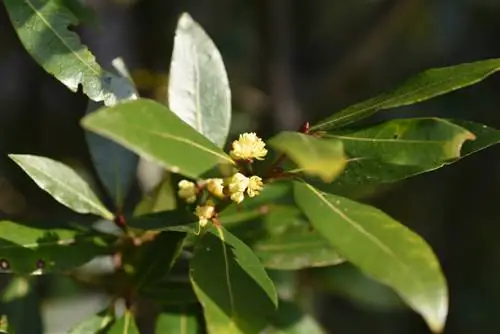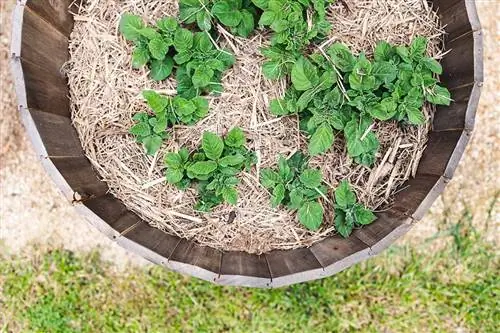- Author admin [email protected].
- Public 2024-01-10 23:11.
- Last modified 2025-01-23 11:20.
The evergreen cherry laurel with its attractively colored foliage is one of the most popular hedge plants. Easy to cut and grows quickly, it forms dense privacy hedges in a very short time. You can get over 25 different species commercially, which have the same location and substrate requirements, but have differences in growth as well as the shape and color of the leaves.
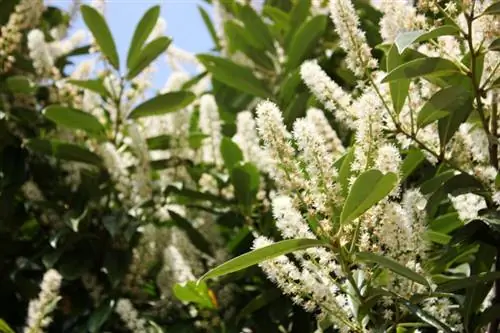
What types of cherry laurel are there?
Popular cherry laurel varieties are the upright laurel cherry (Herbergii), cherry laurel Caucasia (Caucasica), large-leaved cherry laurel (Rotundifolia), cherry laurel Novita (Novita), broad-growing laurel cherry Otto Luyken, cherry laurel Etna (Etna), Portuguese laurel cherry (Lusitanica) and laurel cherry Van Nes (Van Nes). They differ in height, frost hardiness and foliage color.
Common varieties of laurel cherry
In this article you will get a rough overview of the most commonly offered species, their growth and specific features:
Upright laurel cherry (Prunus laurocerasus Herbergii)
This robust variety is fast growing and reaches a height of two to three meters. It is considered to be extremely hardy, fast-growing and thrives very well even in harsh areas. Due to these characteristics, the erect laurel cherry is one of the most common species found in our gardens.
Cherry Laurel Caucasia (Prunus laurocerasus Caucasica)
Strong-growing variety with very nicely shaped, narrow leaves that reach heights of up to four meters. Extremely robust and hardy, this cherry laurel is particularly suitable for hedge planting.
Large-leaved cherry laurel (Prunus laurocerasus Rotundifolia)
Unlike the previous two species, this laurel cherry is quite sensitive to frost and should only be planted in protected places. The foliage is noticeably wider than that of other species, although not round as the Latin name suggests. Rotundfolia reaches heights of up to three meters.
Cherry Laurel Novita (Prunus laurocerasus Novita)
The foliage of this laurel cherry is similar to that of the Rotundifolia variety. However, Novita is much more frost hardy. This strong-growing laurel cherry reaches heights of up to three meters, tolerates pruning well and is therefore ideal for hedge planting.
Wide-growing laurel cherry Otto Luyken (Prunus laurocerasus 'Otto Luyken')
In contrast to other species, this cherry laurel grows broadly bushy and densely branched. It reaches heights of up to 1.50 meters and then only gets wider. It tolerates pruning well and is ideal as a shrub that protects unsightly garden corners or the compost from view.
Cherry laurel Etna (Punus laurocerasus Etna)
Very fast-growing with annual growth rates of up to forty centimeters. It reaches heights of up to two meters and forms very dense hedges thanks to its extensive branching. Easy to cut and hardy.
Portuguese laurel cherry (Prunus angustifolia Lusitanica)
Unlike other species, the Portuguese laurel cherry has relatively narrow leaves. Extremely hardy, it is not only suitable as a plant, but also as an attractive solitary shrub with growth heights of over ten meters.
Laurel Cherry Van Nes (Prunus laurocerasus Van Nes)
Growing densely and broadly, this laurel cherry grows up to two meters high. It produces a particularly large number of flowers, grows densely and compactly and is very frost hardy.
Tips & Tricks
Which variety of cherry laurel you choose for your garden should be based on the location, the soil conditions and the desired growth height. In addition to the common species mentioned in this article, there are other varieties such as the dark-leaved cherry laurel Schipkaensis, which have specific properties such as industrial strength or resistance to shotgun disease. SKb

